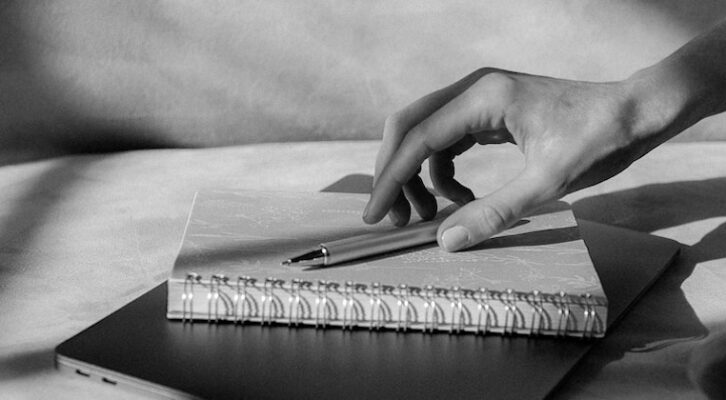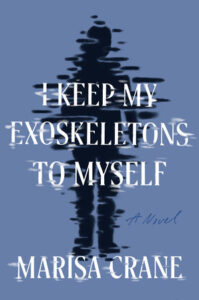
Marisa Crane on the Finer Points of Experimental Fiction
“The experimental form should relate to and enhance the themes and narrative—not distract from it.”
I’ve always loved experimental writing—in fact, it’s my favorite type of work. From books like Multiple Choice by Alejandro Zambra, which is written in the form of a Chilean aptitude test, and Why Did I Ever by Mary Robison, a novel in over 500 fragments, to Carmen Maria Machado’s masterpiece novella, Especially Heinous: 272 Views of Law & Order SVU, experimental work never ceases to inspire and delight me.
When I read Jenny Boully’s The Body: An Essay, which is an entire book comprised of footnotes to an invisible text, I think my brain exploded. Of course, everyone who picks up a book interprets it differently, but Boully takes it to the extreme—every reader must imagine and interact with a text that isn’t there (but also is?). And one of my earliest inspirations, Elizabeth Crane, has a story in her collection, Turf, called “Justin Bieber’s Hair in a Box,” which is, well, what it sounds like. I first heard her read it at the LA Festival of Books years ago, and I thought, Wait, you can do that?
But what, exactly, are we referring to when we talk about experimental writing? Honestly, I find that it can be difficult, if not impossible, to define it, but like many things in life, we often know experimental work when we see it. In short, experimental writing breaks literary conventions. But before we can understand what breaks conventions, we have to first define conventional, which gets a little messy. It’s important to note that what I mean by “conventional” is based on a Western lens of narrative, which Matthew Salesses does a magnificent job of interrogating and upending in his book, Craft in the Real World.
Some literary conventions according to Western standards include:
Ensure that there’s tension
Action must move the story forward
Protagonists should be active in pursuit of their desires and goals
Write a beginning, middle, and end
Include rising action, climax, and falling action
Format the writing to look “normal” on the page, i.e. the piece is broken up into conventional sentences and paragraphs
Don’t insert yourself into the story
Don’t break the fourth wallArticle continues after advertisement
There are many, many more but this isn’t an essay on conventional Western writing, so let’s dive into it.
Experimental writing tends to use unusual forms to tell a story or communicate an emotion or metaphor. The best thing about experimental work is that there aren’t any hard and fast rules—it’s an expansive, freeing process. As much as I love work that falls within the typical boundaries of genre and expectations, it can sometimes make me feel suffocated or stifled. Sometimes knowing that I have room to play with structure and style can put me in a more relaxed mood, which often translates to more interesting and strangely delightful work. Sitting down to write an experimental piece is when I am most likely to surprise myself.
The best thing about experimental work is that there aren’t any hard and fast rules.
Using inventive forms and styles to tell stories isn’t about doing what’s never been done before—it’s about stretching the limits of storytelling. It’s about giving a big middle finger to the restrictions you put on yourself. But before you can do that, it’s wise to familiarize yourself with the experimental work that’s already out there, with the writers who innovate and inspire.
There are many “types” of experimental literature, a few of which I’ve outlined below:
Unconventional structure: Think maps, recipes, crossword puzzles, lists, etc. You notice that it’s going to be an unconventional piece before you even read the first word. (Vagabond Mannequin by K.B. Carle which K.B. uses a crossword puzzle)
Retellings: Think the retelling of a fairytale, the reimagining of a film, or alternate readings or viewings. (Alternate reading of Wuthering Heights by Tanis Franco, which was in Best American Experimental Writing 2018)
Pieces that revise a current text or medium: Think erasure poetry, transforming an original text into a word search, or creating a physical design, such as a window. (Hotel Almighty by Sarah J Sloat is a book of erasure poetry using Stephen King’s Misery as the source text)
Point of view: Think Freshwater by Akwaeke Emezi, much of which is written in first-person plural.
Using various types of technology: Think Jock Party by Jennifer Wortman, which is a collaboration with Predictive Text.
Mixed media: Think literature that uses visual art, photographs, artifacts, documents, and advertisements. Guestbook by Leanne Shapton is an eerie, uncanny short story collection that integrates photography and watercolors into the narrative.
Voice as experimentation: This one may be more subjective than the others but I personally think that voice can be experimental, that you know it when you read it because something is unique or interesting about it. Star Babies by Elizabeth Crane uses repetition to create and propel the story in a hypnotizing way.
Having a structure in mind before you get started experimenting can be very helpful for providing you with a template or framework in which to tell your story. A template can be very freeing and offer space for free-associating because you already have a basic outline for the piece, which means you can go wild within those constraints.
Using inventive forms and styles to tell stories isn’t about doing what’s never been done before—it’s about stretching the limits of storytelling.
But once you set out to write your experimental piece, there are some things you may want to keep in mind. And while I know that I said there are no rules when it comes to experimental writing, I do have some general guidelines I follow:
Don’t forget to play and delight in your work.
Write the piece with confidence and authority—authority can go a long way in building reader trust and investment.
Article continues after advertisementLean into the experiment or metaphor—if you’re going to do it, then really do it.
Be willing to fail. Then fail again and again.
Edit, edit, edit. Even messy, out-of-this-world pieces need to be tight and controlled, within their mess, if that makes sense. A good editor will know the difference when they see it.
The structure needs to enhance the content. Or, in other words, the form must follow the function.
This last guideline more or less means that the form of your piece should relate to the intended purpose or function. Put another way: the experimental form should relate to and enhance the themes and narrative—not distract from it. For example, if you wanted to write a piece in the form of map directions, you may want to consider the ways in which the protagonist is lost or attempting to find their way (however literal or abstract this may be).
Likewise, if you were considering writing a piece in the form of a receipt, you might want to consider what the protagonist has bought, felt like they had to buy (can’t buy me love?), or inherited.
When I began writing my debut novel, I Keep My Exoskeletons to Myself, I didn’t set out to write an experimental novel, but I knew I was writing a story about grief and shame, two of the most traumatic and complicated experiences we can have in life. As I tried to write about my main character Kris’s grief after her wife, Beau, dies during childbirth, I found myself drawn first to fragments, which seemed like a more fitting way to capture her equally fragmented state of mind. Among these fragments, other elements started to appear—first, pop quizzes and lists, then on occasion, game instructions and word searches.
This was especially true when the grief and pain felt too overwhelming for me to continue writing about. I’ve found that using experimental forms can not only grant me access to complicated, difficult emotions but also provide some much-needed breathing room for the reader, even a playfulness. Experimenting can create some distance between the reader and the piece so they are able to continue engaging with the work, even during heavy, painful moments.
Form follows function in my novel for many reasons, one being that the pop quizzes link back to Beau, who was a teacher, and whose piles of graded tests and papers continue to occupy space in the home she and Kris shared. It’s this connection that makes these types of interjections less random and more deliberate. Beau occupies nearly all of Kris’ mental and emotional space, especially early on in the novel when her grief is still fresh, so it makes sense, on some level, for her thoughts to take this form.
Plus, I wanted to challenge Kris’ beliefs and assumptions about grief, shame, identity, parenthood, and love. And these quizzes allowed me to confront and question her throughout her journey, although unlike a typical pop quiz, which has correct answers, Kris’ quizzes often don’t, not only complicating her understanding of these themes, of how to move through the world as she knows it, but also forcing the readers to participate, to make their own choices. To even possibly reveal themselves to themselves.
__________________________________

I Keep My Exoskeletons to Myself by Marisa Crane is available from Catapult Books.
Mac Crane
Mac Crane is a writer, sweatpants enthusiast, and basketball player. Their debut novel, I Keep My Exoskeletons to Myself, came out in January 2023 and was a NYT Editors' Choice and Indie Next Pick. Their second novel, A Sharp Endless Need, is a queer coming-of-age basketball novel and is forthcoming from Dial Press in March 2025.



















